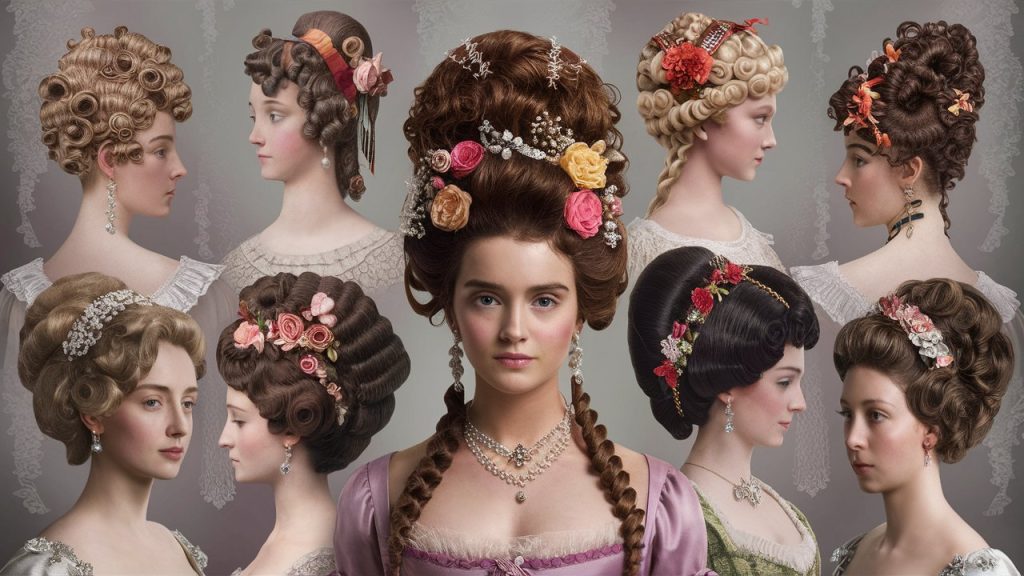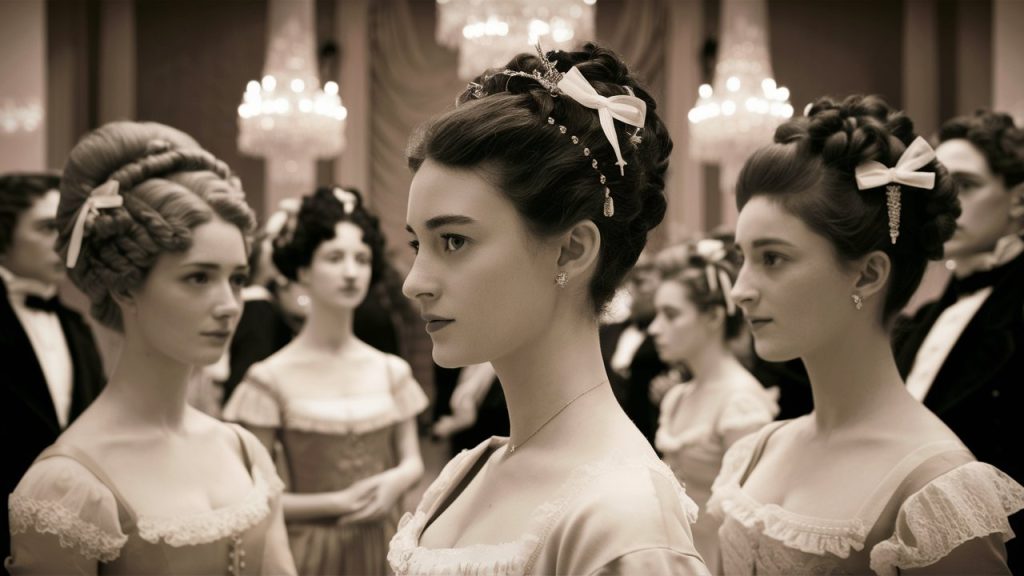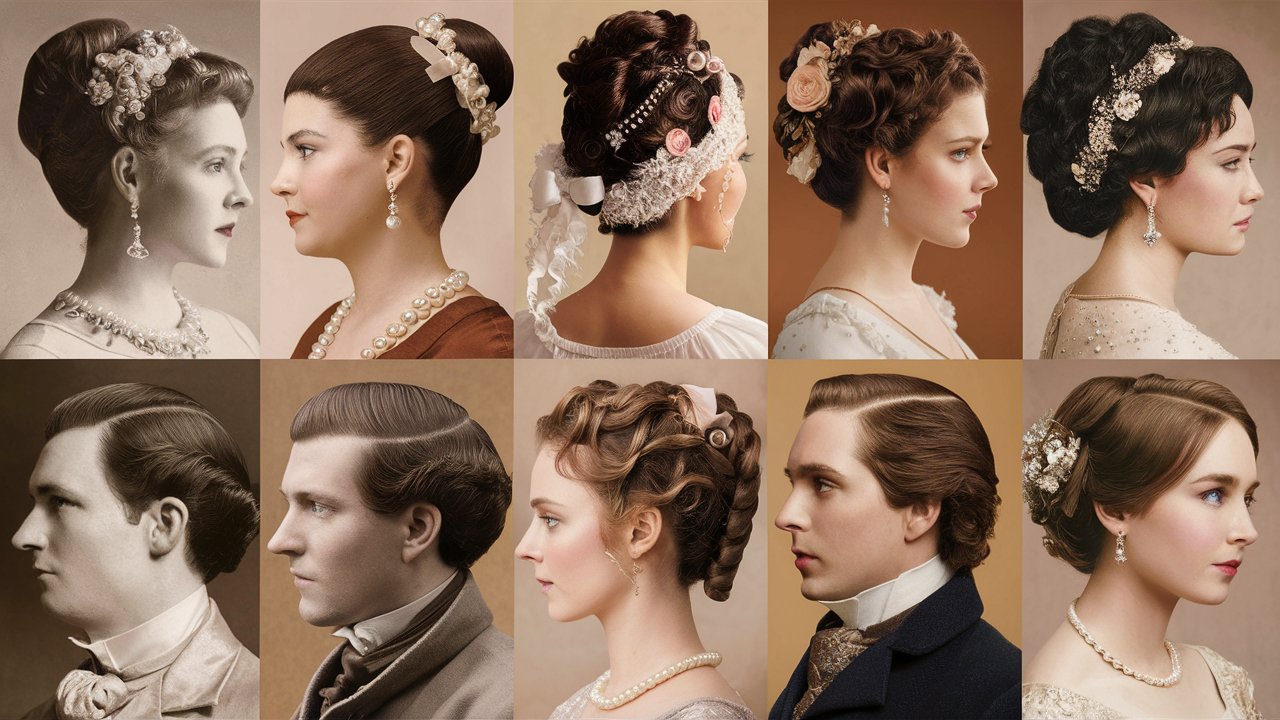Table of Contents
Regency Era hairstyles are a fascinating glimpse into the beauty standards of the early 19th century. Characterized by elegance and simplicity, these hairstyles reflect the grace and sophistication of the Regency period. In this article, we’ll explore the popular styles of the era, their cultural significance, and the secrets behind their timeless appeal.
Key Characteristics of Regency Era Hairstyles

Simple Yet Elegant
Regency Era hairstyles were known for their simplicity and elegance. Unlike the elaborate wigs of the previous century, Regency hairstyles favored a more natural look. Hair was often styled in soft, flowing waves or pulled back into simple updos, emphasizing a clean and graceful appearance.
Use of Natural Hair
During the Regency period, women preferred using their natural hair over wigs. This shift was influenced by the neoclassical movement, which celebrated natural beauty and simplicity. Hair was styled with minimal products, relying on natural texture and gentle techniques. Click here to read more about Lifestyle.
Popular Hairstyles of the Regency Era
The Grecian Knot
Description
The Grecian Knot was a popular hairstyle inspired by ancient Greek art and fashion. It involved gathering the hair into a low, loose bun at the nape of the neck, often adorned with ribbons or a decorative comb. This style created a soft, classical, elegant, practical look.
How to Achieve the Look
To recreate the Grecian Knot:
- Start by brushing your hair and creating loose waves with a curling iron.
- Gather the hair at the nape of your neck, securing it into a loose bun.
- Use a ribbon or comb to add a touch of decoration.
This look is appropriate for both official and informal settings.
The Loose Ringlets
Description
Loose ringlets were a favorite during the Regency Era, reflecting the era’s emphasis on natural beauty. The hair was styled into soft, bouncy curls that framed the face. This hairstyle was often achieved with the help of curlers or by setting the hair in pin curls overnight.
How to Achieve the Look
To achieve loose ringlets, start with clean, damp hair. Use a curling iron or set your hair in pin curls. Once the curls are cool, gently brush them out to create soft, bouncy ringlets. This style adds volume and a youthful appearance.
The Half-Up, Half-Down Style
Description
The Half-Up, Half-Down style was another popular choice during the Regency period. This hairstyle involved pulling the top half of the hair back while leaving the lower half loose and flowing. It balanced an updo and loose hair, creating a sophisticated yet relaxed look.
How to Achieve the Look
Divide your hair into two sections to create the Half-Up, Half-Down style. Secure the top section with pins or a decorative comb while leaving the bottom half loose. For a more polished look, add gentle waves to the loose section. This hairstyle is versatile and can be dressed up or down, depending on the occasion.
Accessories and Adornments
Ribbons and Headbands
Ribbons and headbands were commonly used to enhance Regency Era hairstyles. Ribbons were often tied around the head or used to secure hairstyles, adding a touch of color and elegance. Headbands were also popular, usually adorned with delicate flowers or pearls.
Decorative Combs and Pins
Decorative combs and pins played a significant role in Regency hairstyles. They were used to secure and embellish hair, adding a touch of sophistication. Combs were often made of tortoiseshell or decorated with intricate designs, while pins were used to keep buns and updos in place.
Cultural Significance of Regency Era Hairstyles

Reflection of Social Status
Hairstyles during the Regency Era reflected social status and wealth. Simple, elegant styles often indicated modesty and good taste, while elaborate accessories could signify higher social standing. The focus on natural beauty and minimalism was also a response to the excesses of the previous century.
Influence of Fashion Trends
Regency Era hairstyles were influenced by the broader fashion trends of the time, including the neoclassical movement, which emphasized a return to classical ideals of beauty. This influence is evident in natural hair and classical-inspired styles, reflecting a shift towards simplicity and elegance.
FAQS
What were popular hairstyles during the Regency Era?
Popular hairstyles included the Grecian Knot, loose ringlets, and the Half-Up, Half-Down style. These styles emphasized natural beauty and elegance, reflecting the period’s aesthetic.
How do you create a Regency Era Grecian Knot?
To create a Grecian Knot, gather your hair into a loose bun at the nape of your neck. Secure it with pins or a decorative comb, and add a ribbon for decoration. This style offers a soft, classical look.
What are loose ringlets, and how can I achieve them?
Loose ringlets are soft, bouncy curls that frame the face. To achieve them, curl your hair with a curling iron or set it in pin curls overnight. Brush out the curls gently for a natural, youthful appearance.
What accessories were commonly used in Regency Era hairstyles?
Ribbons, headbands, decorative combs, and pins were commonly used. Ribbons added color and elegance, while combs and pins helped secure and embellish hairstyles, often featuring intricate designs.
Why did Regency Era hairstyles focus on natural beauty?
Regency Era hairstyles focused on natural beauty due to the neoclassical movement, which celebrated simplicity and classical ideals. This shift reflected a response to the more elaborate styles of previous centuries.
Regency-era hairstyles are a beautiful testament to the elegance and simplicity of early 19th-century fashion. From the Grecian Knot to loose ringlets and the Half-Up, Half-Down style, these hairstyles highlight the period’s emphasis on natural beauty and grace. By understanding and recreating these styles, we can appreciate the timeless allure of traditional Regency-era hairstyles. These hairstyles continue to captivate and inspire, whether for historical reenactments or modern-inspired looks.

